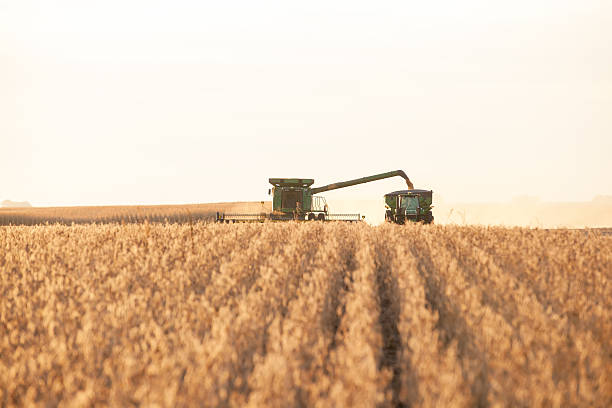Market Analytics and Considerations
Key Notes
Once again, the USDA succeeded in catching speculators off guard because they were expecting a very moderate supply and demand estimate. This 1 bushel an acre increase in productivity was more than balanced by the 1.6 million acre reduction in reaped corn, which decreased the US corn production by 200 million bushels from the Nov estimate. Several hundred and thousands of acres in Kansas and Nebraska were chopped or baled for feed.
The similar situation took place with soybeans, when a decrease in yield and a modest reduction in cropped land resulted in a drop in total output of 70 million bushels from the forecast from Nov, when merchants had anticipated a growth of 16 million bushels. A 55 million bushel decrease in projected export growth and a slight fall in residual usage helped to partly offset the production decline.
Although the modifications were minimal in comparison to what was observed in soybeans and corn, domestic wheat ending stocks were somewhat lower than expected.
Globally speaking, the US maize crop’s declines persisted, reducing takeout more than was anticipated. Because of an increase in Brazil’s crop yields last year, which increased it at 129.5 mmt, worldwide closing stockpiles of soybeans came in higher than expected. On a global scale, the wheat statistics did not offer many surprises.
In a summary, Thursday’s numbers show that, with resources still being scarce, there won’t be much room for error in producing in the coming year.
What then are we considering in the context of production? There is little denying that Argentina is experiencing issues, as the heat and drought threaten to strain the harvest and deplete the soil’s moisture stores. According to vegetation indicators, a substantial chunk of the crop is under stress, and overall conditions are well below average traditionally. Producers across the nation have put off sowing as much as they possibly can, and it is anticipated that 2 million acres of soybeans will stay un-watered because the dry season persisted well beyond the equinox.
Additionally, corn sowing took longer than anticipated and local growers have just merely finished. The USDA, Buenos Aires Grain Exchange, and Rosario Exchange all dramatically reduced their production outlooks from last month because of the heat, drought, and later plantings.
The soybean production was reduced by the greatest amount in Rosario, to 37 mmt, while they anticipate the corn production to be around 45 mmt. The Buenos Aires Grain Exchange created two projections: one assuming rain returns and circumstances normalize, while the other presuming no alterations to weather conditions. The bean crop was estimated to be 41 mmt, which is still over 3 mmt fewer than the crop from the preceding year. They estimate that in the absence of rain, the bean harvest could drop to 35.5 mmt, which is less than the nation’s annual crush requirement.
However, USDA, on the other hand, was a little more circumspect with cutbacks than usual, placing its assessment of the bean harvest at 45.5 mmt this week, down 0.3 mmt from the prior month. While being 3 mmt less than in the last month, their projection of 52 mmt grain production is better than other output predictions for Argentina.
Given another well deficits in Argentina and the lesser harvest in the US, Brazil’s ability to produce will be crucial. The prediction for soybeans is typically well recognized, with most people being able to predict that a harvest will fall anything between 150 and 155 mmt. Even with Argentina’s productivity projection being at a multi-year bottom, surrounding countries are doing considerably better than they did a year back
We have such a long road ahead to go until we understand exactly what will be generated so because bulk of Brazil’s corn originates from harvests that are scheduled to begin over the course of the next month through March. It is simple to suppose that the crop will be planted early enough just to complete the bulk of its crucial reproductive stages when monsoon rainfall precipitation is still there. Nevertheless, the same advanced models that forecast Argentina’s weather patterns will return precipitation also project that the majority of Brazil will see drier than average conditions at that time.
This dryness will be necessary in the near future since beans must be picked and the weather has already been difficult. La Nina has a 71percentage – point probability of dissipating in the time frame of Feb through Apr, so there is still the likelihood this might disrupt climate patterns. Nevertheless, this will need to be monitored.
End users will most likely be on alert due to the unpredictability of world supply, with the US appearing as one of the most inexpensive exporters as a result of Brazil’s export capability that is used up and growers in Argentina resting on their paws.
It is now up to the purchasers to decide whether they will arrive and purchase US goods or if they would wait patiently. China seems to be the strong favorite at this stage. Current purchases have risen exponentially; according to new information released over the weekend, importation of soybeans in Dec reached their highest possible level until June 2021. The primary reason for the increase was the significant increase in exports leaving Argentina as a result of September’s soybean dollar together with newly cultivated US supply.









